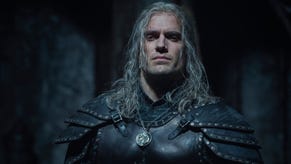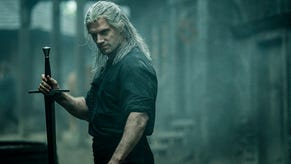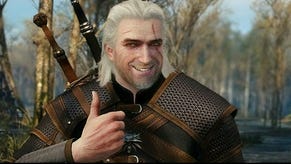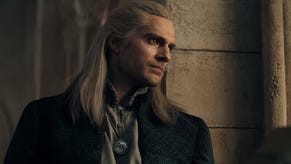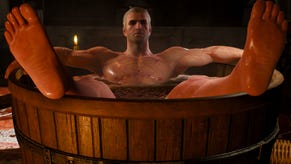Projekting: Hands On With The Witcher 2
What follows are impressions of The Witcher 2 based on the limited preview code that Namco and CD Projekt recently released to the press. It's the prologue and first chapter of the full game, and as such makes up a healthy chunk of play time. People are saying about ten hours, but I think I spent longer than that with it. I'll avoid specific narrative spoilers, but I won't be avoiding game-mechanic spoilers. What that means is that I'll be talking about how the game works, but not that much about what actually happens. This is not a game where you want to know about the surprises.
So let's take a look at everything else.
In the light of the Crysis 2 crisis, it seems funny that The Witcher 2 – a game that couldn't be more PC-focused if it tried – should come with such limited graphics options. You can change the resolution and the overall detail, from “low” through to “ultra”, and that's it. Now this is a preview build, so maybe more options will be exposed in the final release menus, but maybe not. There's a console in-game, which I suspect will come in handy, but I've not investigated that. All I can say for now is that I set the game to “Ultra” and got on with my adventure.

The prologue is, thankfully, elegantly delivered. Told in flashback form, it sees Geralt explaining the events that led up to the current time. Needless to say, he's a in a bit of a predicament. This pre-story story takes place in the midst of a huge castle siege, which makes for a spectacular backdrop, and at least as spectacular as the Ostagar portions of Dragon Age: Origins. And of course – with my “ultra” settings – the game looks far better than any RPG has so far looked. Surfaces glisten, eyes glint, distances blur, textiles warp and weave, and particles, um, particulate? Of course tech is nothing without artistic vision, and this is potent, although better in some parts than other. The prologue, while formidable in scope – the towering fantasy castle is being attacked by a gigantic army, with trebuchets going off in the background and a battle raging across the city below – is a fairly unsurprising environment. The first chapter on the other hand – an evil river, murderous gangs, a factionalised medieval village, and a sprawling, ancient forest – is a vision of grimdark fantasy worlds as they were meant to be.
And that's not simply down to the complexity of the environment, but also the life that the characters bring to it. Children run about, incidental NPCs chat and moan, key personalities wander around the areas, getting on with their tasks, climbing ladders, picking up objects and so on. It's exquisite stuff. If it lacks anything at all, it seems to be general ambient life – it could do with a few bugs, birds, and miscellaneous beasts. (There are some flocks of birds, come ot think of it, but they are occasional and incidental and quickly gone.)

It's Chapter One where you begin to see the game open up a bit. Having followed a ruthlessly linear story for the few hours, you are then given access to a village and the surrounding forest. There's quite a lot to explore, and a decent area to roam about in. There are, of course, multiple sidequests, and these are fun, interesting and convincing. Nothing has so far struck me as too ridiculous, in the way that game quests so often do. There's also scope for foraging for herbs, and even collecting other general crafting crap to be carted back to the village and turned into stuff – assuming you have the formula for doing so. All very much the familiar fantasy ways of doing things, but pleasing to play with. Geralt's inventory is going to become a management game all on its own.
Combat, then. Yes, it's better than the original. It also took me longer to grasp than the original. I was a little surprised that there was nothing more than a tooltip at start of the game to explain what is actually a fairly sophisticated melee system. It feels pleasingly organic, once you have the hang of it, however. Essentially you have a basic ability to do a quick light blow, or a slower heavy blow. You can also hit E to block. These basics allow you to take on any opponent, although selection of that opponent is frankly a bit wobbly. I'll probably get used to it.

A dude with a sword and shield might always be able to block your hits, but as soon as he takes a swing, he's open to a quick attack. You'll soon become comfortable with that, and start timing your blows accordingly. It's not always possible to block blows, either – a dude with a big old polearm will beat you to the ground whether you have your sword raised or not. That means you do have to think about positioning. You can roll about with the spacebar to your heart's content, and you will be rolling, too, because the AI, while not perfect, does work hard to flank you, and attacks from behind do significantly more damage. Being flanked by two competent enemies is death. There's also situations where there are bads on all sides, and that can basically be impossible to get out of. (Skills also unlock some other abilities in combat, such as being able to parry in all directions.)
As before, some enemies are non-human, and require a silver sword to kill. I find this a little arbitrary, but whatever, it's part of the lore of The Witcher's world. Also part of that law is the skill and magic set which lies behind your effectiveness in combat. This is a traditional level-based RPG, of course, but the actual skill tree is somewhat unusual. It's a large network of related skills which can be unlocked if a connected skill is already unlocked. Skills can be pumped up a couple of levels to max them out, or you can expand into their little tree to get similar bonuses. You won't be filling these all out, however, because there won't be enough points to spend. Your Geralt build, therefore, could potentially be unique in different playthroughs, and that's without all the fiddling with potions and equipment that you could possibly get up to.

What isn't clear from this preview build, is just how flexible core quests are going to be in terms of what you can choose to do. So far I haven't seen much deviation from the linear path, despite chapter one's general openness. While I made radically different choices during one key scene, the outcome was always essentially the same. I am hoping that later chapters will be far more forked and give us genuine choice and consequence. But I guess we'll see.
There are some other issues in this preview build that I think people will find significant. The first of these is the save function. Generally the game auto-saves at important points, but there's potential in the more open areas for you to cover a lot of ground between auto-saves, and therefore lose a lot of game time if you die. This is covered by there being a quicksave function, which is only available outside of combat or specific set-piece scenarios. Weirdly, however, there is no manual save. Seems like a bit of an oversight.

More far-reaching for the game experience is the inclusion of quick time events (QTEs). These modes of interacting with action sequences certainly divide people, and the QTEs in The Witcher 2 divided me. That's because some of them are pretty good – the QTEs for fist-based fights (as opposed to normal, lethal melee) are great. You use the WASD keys to time moves on your enemy, and you take a beating if you fluff it. There are other sequences, however, such as one in the prologue where you are being chased by a monster, where the QTEs fall into the standard trap of being irritating push-button cutscenes that might just as well have been non-interactive cutscenes for all the enjoyment they add to the game.
And let's not be confused about the nature of this game: there are a lot of cutscenes, because there is a lot of dialogue. While the majority if your time is going to be spent running about and poking things with a sword, there are dozens of people to talk to just in the limited slice of the game that I've seen, and there's a tonne of exposition if you can be bothered to listen to it. Fortunately most of the dialogue and voice-acting is superb. There are a few tiny moments where things fail to flow or phrases seem out of place, but they are mere niggles. The talky bits seem superbly produced , and that extends to the overall design and delivery of the characters. (Although not to its map, which is a bit disappointing.)

Most important among these characters is – so far at least – Triss Merigold, the sorceress and lover of Geralt. She is - thus far in the game - only one of two women to expose her breasts, and it's done surprisingly tastefully. Triss is there to be sexy, but fortunately the attitude towards her seems bawdy rather than offensive. She's brilliantly sarcastic and makes for a strong female lead in game that is set up to be overly masculine. She does walk like she's on a catwalk at all times, of course... but at least she doesn't take any shit. Geralt has so far kept his trouser-snake on a much tighter leash, too, and I suspect one of the major choices in the game is going to be whether you stay faithful to Triss or get it on with the game's other bosomed beauties.
Ultimately The Witcher 2 is looking strong. It's beautiful (on a i5 2500k, 8gb RAM, and GTS250 at max settings it was doing a steady 20 fps in the most intense of scenes, rising to over 30fps for general running about). It's pretty challenging – every fight seemed to have a risk of death. Mostly importantly for an RPG, however, it seems to have a solid grasp on its themes, its sense of place, and its world. It's looking like it will be a great story, well told.
Yes, this is probably a good reason to upgrade your PC. No, I don't think the game will be without significant flaws. Yes, this is a good time to finish the original. And yes, yes, I'm now quite anxious play the full thing and tell you wot I think. It's going to be an excruciating wait.


